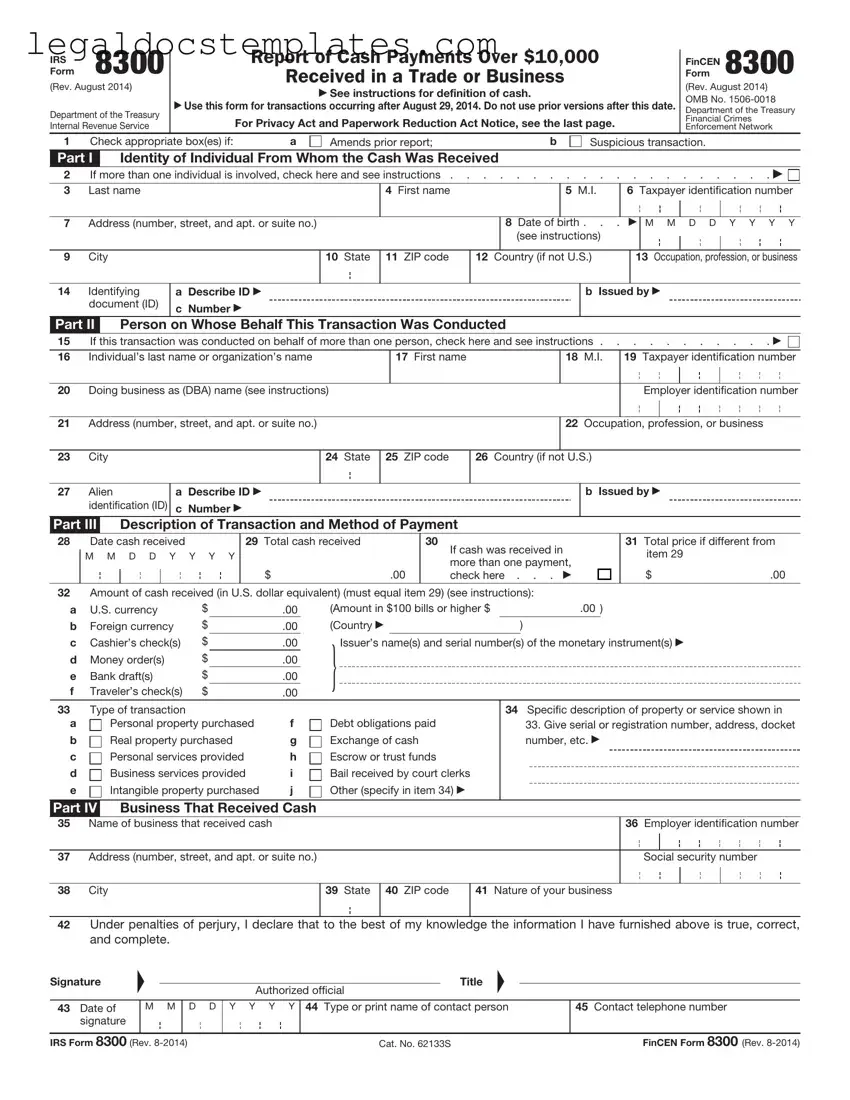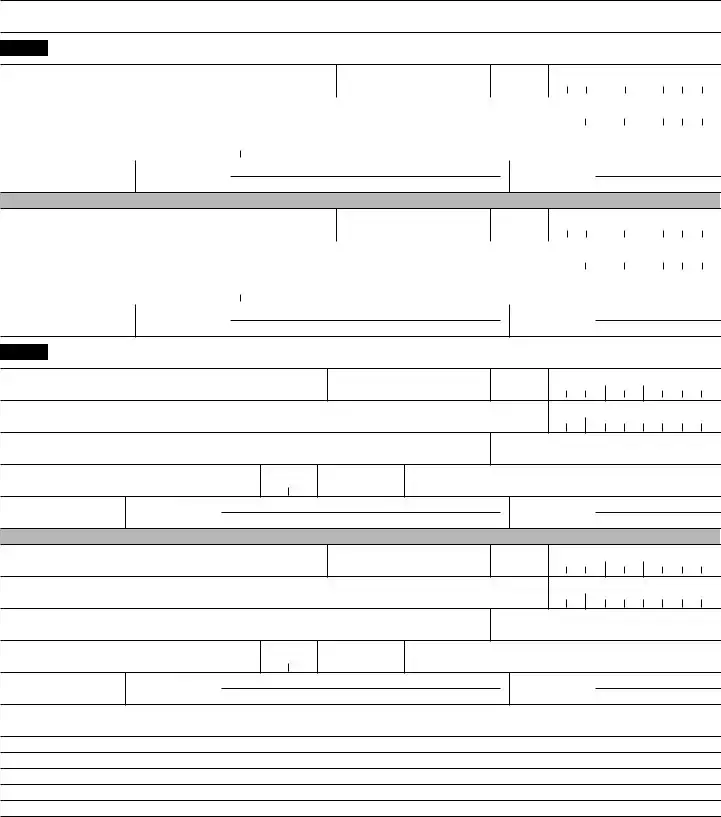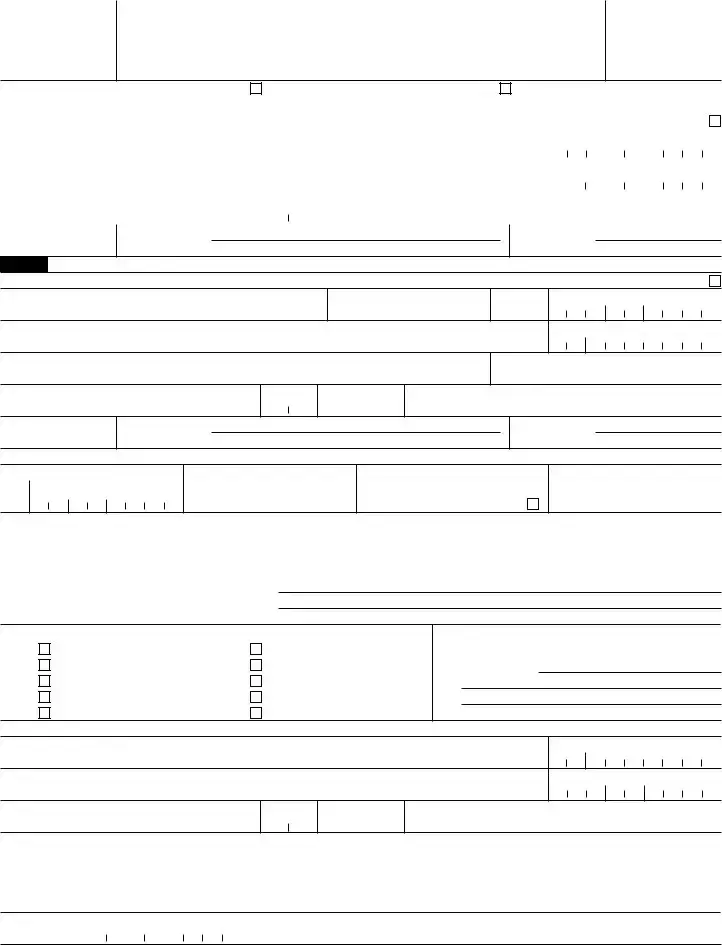Penalties. You may be subject to penalties if you fail to file a correct and complete Form 8300 on time and you cannot show that the failure was due to reasonable cause. You may also be subject to penalties if you fail to furnish timely a correct and complete statement to each person named in a required report. A minimum penalty of $25,000 may be imposed if the failure is due to an intentional or willful disregard of the cash reporting requirements.
Penalties may also be imposed for causing, or attempting to cause, a trade or business to fail to file a required report; for causing, or attempting to cause, a trade or business to file a required report containing a material omission or misstatement of fact; or for structuring, or attempting to structure, transactions to avoid the reporting requirements. These violations may also be subject to criminal prosecution which, upon conviction, may result in imprisonment of up to 5 years or fines of up to $250,000 for individuals and $500,000 for corporations or both.
Definitions
Cash. The term “cash” means the following.
•U.S. and foreign coin and currency received in any transaction; or
•A cashier’s check, money order, bank draft, or traveler’s check having a face amount of $10,000 or less that is received in a designated reporting transaction (defined below), or that is received in any transaction in which the recipient knows that the instrument is being used in an attempt to avoid the reporting of the transaction under either section 6050I or 31 U.S.C. 5331.
Note. Cash does not include a check drawn on the payer’s own account, such as a personal check, regardless of the amount.
Designated reporting transaction. A retail sale (or the receipt of funds by a broker or other intermediary in connection with a retail sale) of a consumer durable, a collectible, or a travel or entertainment activity.
Retail sale. Any sale (whether or not the sale is for resale or for any other purpose) made in the course of a trade or business if that trade or business principally consists of making sales to ultimate consumers.
Consumer durable. An item of tangible personal property of a type that, under ordinary usage, can reasonably be expected to remain useful for at least 1 year, and that has a sales price of more than $10,000.
Collectible. Any work of art, rug, antique, metal, gem, stamp, coin, etc.
Travel or entertainment activity. An item of travel or entertainment that pertains to a single trip or event if the combined sales price of the item and all other items relating to the same trip or event that are sold in the same transaction (or related transactions) exceeds $10,000.
Exceptions. A cashier’s check, money order, bank draft, or traveler’s check is not considered received in a designated reporting transaction if it constitutes the proceeds of a bank loan or if it is received as a payment on certain promissory notes, installment sales contracts, or down payment plans. See Publication 1544 for more information.
Person. An individual, corporation, partnership, trust, estate, association, or company.
Recipient. The person receiving the cash. Each branch or other unit of a person’s trade or business is considered a separate recipient unless the branch receiving the cash (or a central office linking the branches), knows or has reason to know the identity of payers making cash payments to other branches.
Transaction. Includes the purchase of property or services, the payment of debt, the exchange of cash for a negotiable instrument, and the receipt of cash to be held in escrow or trust. A single transaction may not be broken into multiple transactions to avoid reporting.
Suspicious transaction. A suspicious transaction is a transaction in which it appears that a person is attempting to cause Form 8300 not to be filed, or to file a false or incomplete form.
Specific Instructions
You must complete all parts. However, you may skip Part II if the individual named in Part I is conducting the transaction on his or her behalf only. For voluntary reporting of suspicious transactions, see Item 1, next.
Item 1. If you are amending a report, check box 1a. Complete the form in its entirety (Parts I-IV) and include the amended information. Do not attach a copy of the original report.
To voluntarily report a suspicious transaction (see Suspicious transaction above), check box 1b. You may also telephone your local IRS Criminal Investigation Division or call the FinCEN Financial Institution Hotline at 1-866-556-3974.
Part I
Item 2. If two or more individuals conducted the transaction you are reporting, check the box and complete Part I on page 1 for any one of the individuals. Provide the same
information for the other individual(s) by completing Part I on page 2 of the form. If more than three individuals are involved, provide the same information in the comments section on page 2 of the form.
Item 6. Enter the taxpayer identification number (TIN) of the individual named. See Taxpayer identification number (TIN), earlier, for more information.
Item 8. Enter eight numerals for the date of birth of the individual named. For example, if the individual’s birth date is July 6, 1960, enter “07” “06” “1960.”
Item 13. Fully describe the nature of the occupation, profession, or business (for example, “plumber,” “attorney,” or “automobile dealer”). Do not use general or nondescriptive terms such as “businessman” or “self-employed.”
Item 14. You must verify the name and address of the named individual(s). Verification must be made by examination of a document normally accepted as a means of identification when cashing checks (for example, a driver’s license, passport, alien registration card, or other official document). In item 14a, enter the type of document examined. In item 14b, identify the issuer of the document. In item 14c, enter the document’s number. For example, if the individual has a Utah driver’s license, enter “driver’s license” in item 14a, “Utah” in item 14b, and the number appearing on the license in item 14c.
Note. You must complete all three items (a, b, and c) in this line to make sure that Form 8300 will be processed correctly.
Part II
Item 15. If the transaction is being conducted on behalf of more than one person (including husband and wife or parent and child), check the box and complete Part II for any one of the persons. Provide the same information for the other person(s) by completing Part II on page 2. If more than three persons are involved, provide the same information in the comments section on page 2 of the form.
Items 16 through 19. If the person on whose behalf the transaction is being conducted is an individual, complete items 16, 17, and 18. Enter his or her TIN in item 19. If the individual is a sole proprietor and has an employer identification number (EIN), you must enter both the SSN and EIN in item 19. If the person is an organization, put its name as shown on required tax filings in item 16 and its EIN in item 19.
Item 20. If a sole proprietor or organization named in items 16 through 18 is doing business under a name other than that entered in item 16 (for example, a “trade” or “doing business as (DBA)” name), enter it here.




